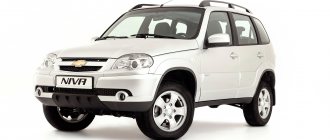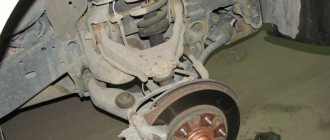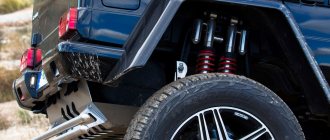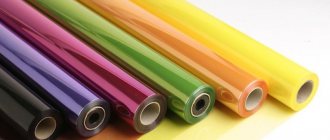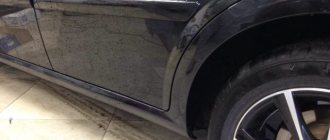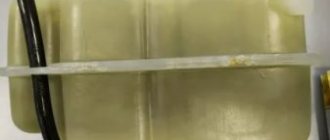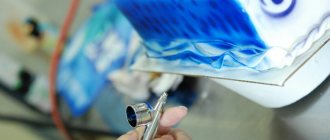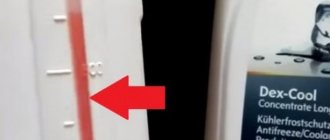With the advent of the internal combustion engine, the need arose to cool it. Antifreeze is a universal liquid that has a high combustion temperature and a low freezing threshold. It is designed to cool the engine, and both a novice car enthusiast and a professional must know which antifreeze is better to use, red or green. At the moment, there are many types of antifreeze that can withstand different temperatures, suitable for many types of engines.
It is not worth highlighting the color of the engine cooling substance yourself, because every developer tries to create an original product. In Soviet times, the analogue of European antifreeze was TOSOL, which existed only in two colors: red and blue. These types of liquid had different freezing points
. With the arrival of Western manufacturers on our market, antifreeze has become more diverse, the quality is higher, and there are more possibilities. European manufacturers try to adhere to the ratio of color and type of this product.
The composition of the coolant is quite diverse, which affects its characteristics.
What are the types of coolers by type?
At the moment, the following types of cooling liquids can be distinguished:
- Salt antifreezes
are created on the basis of hydrochloric acid. Depending on its concentration in the composition, the freezing threshold also decreases. The main disadvantage of such a substance is the main ingredient. The more it is, the higher the risk of corrosion. - Glycol liquids
are developed based on ethylene glycol of varying concentrations. And the higher it is, the lower the temperature the liquid can withstand. Its positive properties include its freezing point of -65 degrees. Such a liquid turns into mush and does not change its volume, which does not lead to rupture of the generator. But, to achieve maximum effect, at least ten special additives must be added to such antifreeze. Otherwise, the ability of the substance is reduced, and the negative impact on the motor increases. - Alcohol antifreezes
are not used to cool the engine, as they have a high risk of fire. They are used for windshield wipers or air brakes. - Glycerin compounds
became a real discovery at the end of the 20th century. This is the most non-toxic and pure glycerin-based product that does not freeze at -40 degrees. One of the advantages of such a liquid is the price, which is lower than the cost of products containing ethylene glycol or propylene glycol.
You should not choose a cooling liquid based on color. All over the world there is a uniform labeling of all types of antifreeze
, which differ in quality, composition, degree of freezing, as well as application for certain types of motors.
Types of coolant by color
According to the color scheme, the following types of coolers can be distinguished:
- Most often, red carboxylate antifreeze is marked G 12. It contains inhibitors that are absorbed only in areas of corrosion. Red antifreeze contains carboxylate inhibitors, which effectively prevent corrosion. Also, this type has a service life of up to 5 years.
- The green color of the substance is most often found as G 11. It may contain organic or inorganic constituents. Their service life reaches three years.
- The purple color of the substance is marked G12++. It is produced based on a combination of minerals and organic matter. Its advantage is the ability to cover the entire cooling system with a protective film. This type is used very sparingly, since the substance only acts when corrosion occurs. If this type is poured into a new engine, the liquid can have an unlimited service life.
The most popular substances are red and green. Therefore, the difference between red and green antifreeze is relatively small, but it significantly affects the condition of the engine and its wear resistance. Ethylene glycol antifreezes have been leading the market for some time due to their ability to withstand temperatures from -32 to -70 degrees, which depends on the amount of additives.
You may also be interested
What antifreezes can be mixed: compatibility table
In some situations, it becomes necessary to combine different cooling compounds. Liquids have to be mixed, for example, when you need to add the missing amount of coolant to the system in case of unexpected breakdowns on the road. To extend the service life of cooling system components, you need to study in advance information about the compatibility of different compositions.
Green antifreeze
This antifreeze has higher technological characteristics than TOSOL, and its composition differs little from blue and yellow liquids. The main thing is to pay attention to the tolerances and technical characteristics on the label.
Distinctive characteristics
When choosing the product needed for cooling, the material of the engine cooling system itself must be taken into account. Unlike green, red antifreeze is excellent for working with copper, brass, and their alloys. Green is ideal for contact with aluminum and its alloys.
Red antifreeze contains ethylene glycol and carboxylate compounds, which makes this type more expensive, but it has an effective heat dissipation, concentrating on areas of corrosion. Green covers the entire surface of the cooling system with protection.
The difference between types of coolant is the price, as well as the service life of the substance. The green liquid also contains ethylene glycol, but with fewer additives, which reduces the service life to 3 years.
Red antifreeze is suitable for engines operating at high speeds and at low temperatures.
Its service life is 5 years, it is the most popular substance for engine cooling in the post-Soviet space.
Another advantageous quality that distinguishes these species is the temperature threshold. Red antifreeze can withstand temperatures of -30 degrees, and green freezes at -25.
Often the manufacturers themselves indicate on the product packaging what type of engine the product is intended for. This contributes to proper operation and increased wear resistance of parts.
Rating of the best antifreezes
| Nomination | place | Name of product | price |
| The best inexpensive antifreezes | 1 | SINTEC LUX G12 | 146 ₽ |
| 2 | LUKOIL Red G12 | 119 ₽ | |
| 3 | Felix Carbox G12 | 147 ₽ | |
| 4 | Highway G11+ | 330 ₽ | |
| 5 | Starex Red | 149 ₽ | |
| The best antifreezes for cars in terms of price-quality ratio | 1 | Liqui Moly Langzeit GTL12 Plus | 2 050 ₽ |
| 2 | SINTEC UNLIMITED G12++ | 159 ₽ | |
| 3 | FELIX PROLONGER -40 | 135 ₽ | |
| 4 | AGA Z65 | 668 ₽ | |
| 5 | Toyota Long Life Coolant Red Concentrate 1L | 1 269 ₽ | |
| 6 | TCL Power Coolant Green -40 2L | 630 ₽ | |
| 7 | MOTUL INUGEL EXPERT | 1 403 ₽ | |
| The best antifreeze concentrates | 1 | MOBIL ANTIFREEZE ULTRA | 475 ₽ |
| 2 | Liqui Moly Kuhlerfrostschutz KFS 2001 Plus | 712 ₽ | |
| 3 | Castrol Radicool SF | 450 ₽ |
It is important to know
It is worth noting that when purchasing a new car, it is necessary to fill in antifreeze clearly knowing the composition of the cooling system. And when purchasing a used car:
- You need to know what type of fluid was used. If this is unknown, it is advised to completely drain the substance, flush the radiator, and then fill in a new one.
- It is worth changing all technical fluids.
- You need to add a red or green substance of the exact brand that has already been used by the driver. Different manufacturers may add different additives, which, when mixed, give an undesirable effect, may foam or deteriorate their cooling properties.
- No matter how long the coolant lasts, it is worth checking its level regularly and replacing it on time.
To sum it up
It’s safe to say that red antifreeze differs from green in only a few ways, which can significantly affect the wear resistance of the engine.
Main differences:
- Type of coolant.
- Temperature threshold.
- Number of additives.
- Methods and possibilities for protecting the system from corrosion.
- The material from which the engine itself and the cooling system are made.
But it is worth noting that paying attention only to the color of the coolant, without specifying its purpose or composition, can lead to unwanted costs in car repairs. Experienced motorists advise a fluid that will work ideally in a particular car, reliably cooling the engine and preventing corrosion. When choosing the required type, you should take into account not only the color, but also the composition.
. Trying to be original, many manufacturers use different colors, while the dyes do not affect the quality of the substance.
When choosing red G12 or green G 11, the driver must first take into account the manufacturer and composition, but color is what can deceive the consumer. It is the amount of additives and the concentration of ethylene glycol that will be the main components at which cooling will occur.
← Previous material
Next material →
Is it possible to mix?
During operation, the refrigerant level in the tank will decrease, which is due to the presence of distillate in the substance. When the liquid heats up, it begins to escape through the valve, so for many car owners the issue of mixing antifreezes of different compositions is relevant. If you make mistakes when adding liquid, it will lead to serious consequences. In particular, we are talking about additives.
If two refrigerants containing organic and inorganic additives are mixed, a chemical reaction will occur and the liquid in the system will foam. This will lead to overheating and boiling of the power unit. All the antifreeze that is useful for the radiator and engine will precipitate, and the protective film on the structural components will disappear. Which contributes to the deterioration of heat exchange in the so-called cooling jacket.
If it is necessary to replenish the refrigerant level, distillate must be added. But keep in mind that mixing antifreeze with distilled water helps lower the crystallization temperature threshold. For example, if the ratio of liquid to concentrate is one to one, then the refrigerant will begin to freeze not at -40, but at -15 degrees. This is especially important to consider in winter. Additionally, when water is added, the volume of antifreeze will increase due to freezing.
What to do if mixed?
1. Drain the old coolant from the radiator
2. Fill with distillate or flushing agent
3. Remove deposits from the pipes
4. Fill with new antifreeze
If you mixed two liquids of different standards with different additive packages, then the first thing to do is replace the antifreeze as soon as possible and flush the cooling system.
To complete this task, do the following:
- Wait until the engine cools down, otherwise hot antifreeze coming into contact with your skin may cause a burn.
- Place a container - a bucket or basin - under the drain plug on the radiator.
- Open the hole cap and wait until the used antifreeze exits the system.
- Screw the plug back on.
- Add about five liters of distilled water to the filler hole on the expansion tank. Its volume should correspond to the amount of waste drained from the radiator. The distillate can be diluted with citric acid in the proportion of 1 kg of the latter per 10 liters of liquid in case of critical deposits. Or 800 grams of acid per 10 liters of water for light and medium pollution. Please note that if you use clean water, rinsing will take less time, since you will have to wait several hours when mixing the liquid with citric acid. Instead of distillate, you can use a special flushing agent. The length of time it should remain in the system depends on the manufacturer.
- When the water is filled, start the engine. You can do a test drive or let it idle. Increase the speed of the power unit while squeezing the cooling system pipes. This will remove any sediment that may have formed as a result of mixing green and red antifreeze. The engine operating time when flushing with distilled water is about 15-25 minutes.
- If the drained liquid is very dirty, there are traces of rust, deposits and scale, then repeat the cleaning procedure again. Flush until clean water begins to come out of the system. If the pipes are clogged with deposits, blow them out. If heavily soiled, replace the hoses.
- Then fill the expansion tank with fresh antifreeze that matches your engine specifications. Start the engine, compress all the cooling system lines. Perform a test drive and add fluid to the reservoir if necessary.

